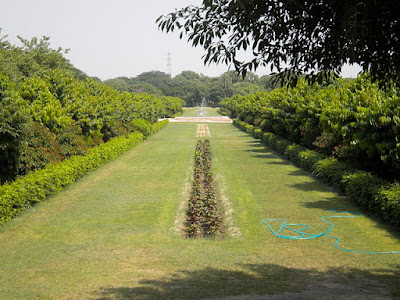The Mehtab Bagh garden was the last of eleven Mughal-built gardens along the Yamuna opposite the Taj Mahal and the Agra Fort. Mehtab Bagh (Moonlight Garden) is a charbagh complex in Agra, North India.
History
The Mehtab Bagh garden was the last of 11 Mughal-built gardens on the Yamuna opposite the Taj Mahal and also the Agra Fort; the primary being Ram Bagh. it's mentioned that this garden was designed by Emperor Babur (d. 1530). it's additionally noted that Emperor Shah Jahan had known a website from the crescent, grassy champaign across the Yamuna stream as a perfect location for viewing the Taj Mahal. it had been then created as "a moonlit pleasure garden known as Mehtab Bagh." White plaster walkways, ethereal pavilions, pools and fountains were additionally created as a part of the garden, with fruit trees and narcissus. The garden was designed as Associate in Nursing integral a part of the Taj Mahal advanced within the riverfront terrace pattern. Its dimension was a twin of that of the remainder of the Taj Mahal. Legends attributed to the attraction of the seventeenth century French traveller Jean Baptiste Tavernier mention monarch Jahan's would like to create a black marble burial chamber for himself, as a twin to the Taj Mahal; but, this might not be achieved as he was unfree by his son Aurangzeb. This story had been additional fueled in 1871 by a British anthropologist, A.C.L. Carlleyle, who, whereas discovering the remnants of Associate in Nursing previous lake at the positioning had mistaken it for the inspiration of the legendary structure.Thus, Carlleyle became the primary man of science to note structural remains at the positioning, albeit blackened by bryophyte and lichen. Mehtab Bagh was later in hand by Raja Man Singh Kacchawa of Amber, WHO additionally in hand the land round the Taj Mahal
Frequent floods and villagers extracting building materials nearly ruined the garden. Remaining structures inside the garden were in a very ruinous state. By the Nineties, the garden's existence was virtually forgotten and it had degraded to very little quite a vast mound of sand, lined with wild vegetation and deposit silt.



